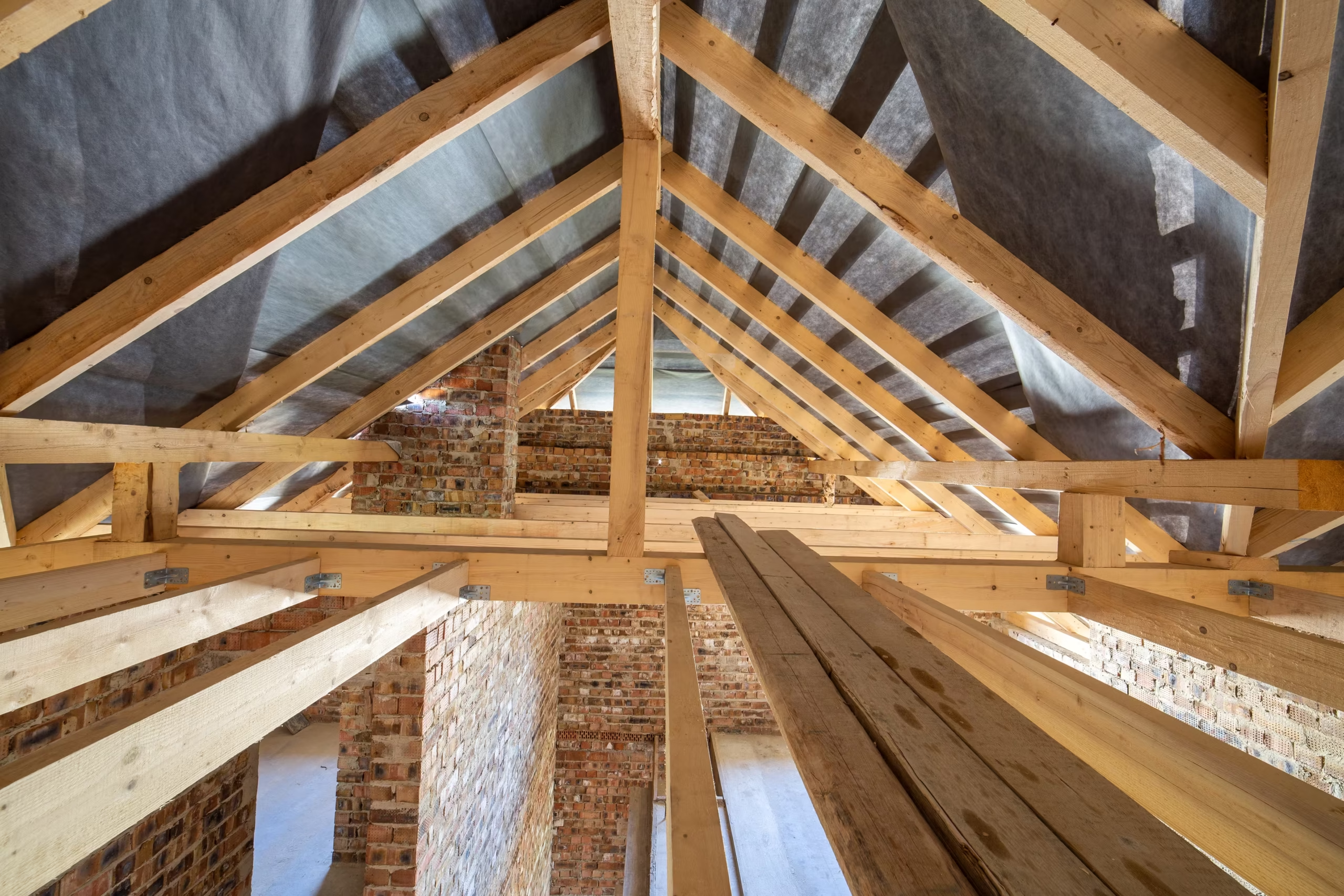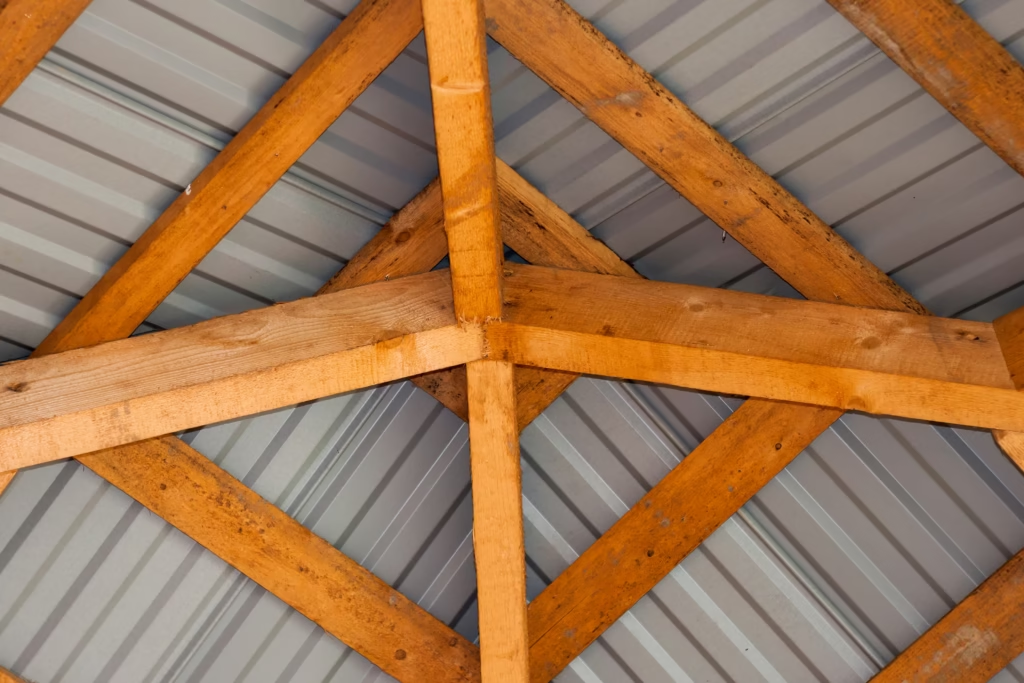All good and lasting roofs begin with a good frame. Purlins and rafters are two such important structural members. They may seem similar to the eye, but their functions in support of roofing materials and stabilization are quite different.
Whether you are the contractor, builder, or homeowner designing the project, knowing this difference will help you make the right choice for design, strength, and cost.
At Cladding Projects Limited, educated choices build quality structures. This guide will describe purlins and rafters, their dimensions and costs, and their main points of difference, so that you may decide on the one that is suitable for your project.
What Are Purlins?
Purlins are horizontal structural members used in roofs for supporting tiles, decking, or sheets. They are generally placed between the roof covering and the main frame of the roof (trusses or rafters).
So instead of the covering resting directly on the rafters, the purlins take the load from the covering and are preferably used for large spans.
Types of Purlins
- C-Purlins – Curved in the letter “C” shape, commonly used in light steel construction.
- Z-Purlins – Stronger because of overlapping joints; best for longer spans.
- Timber Purlins – Classic choice for pitched roofs, usually used alongside wooden rafters.
- Steel Purlins – It is used mainly in modern constructions for heavy-duty uses, being lightweight and free of termite and warping issues.
Since purlins are known to be cheap and adaptable, they find huge demand in industrial and commercial building roofings.
The panels lie on the purlins and are, therefore, typically parallel.
You may also like – Types of Warehouse
What are Rafters?

Rafters are sloping roof members, vertical in direction, that extend from the ridge beam to the wall plate.
They create the framework of pitched roofs and directly support roof coverings like tiles or shingles. In contrast to purlins, rafters carry individual loads, and the weight is passed on directly to the walls.
Why Rafters are Important?
- Offer good structural integrity for smaller roofs.
- Ideal for traditional-style homes, cabins, and sloped styles.
- Provide aesthetic appeal with exposed timber designs.
But rafters are more material- and labor-intensive than purlins and therefore are not as frequent in large-scale contemporary construction.
Sizes of Purlins and Rafters
The sizes of the purlins and rafters vary according to the roof span, the roof slope, and the kind of material.
- Rafters (Timber) – Usually range between 2×6 inches and 2×12 inches. Wider spans warrant the thicker section of the rafters.
- Purlins (Steel) – Usually range between 100mm to 300mm in depth, and the thickness shall be from 1.5mm to 3mm, depending on the load.
- Timber Purlins – Usually between 4×2 inches and 6×3 inches.
Proper sizes are chosen per structural design so that these members can support the roof’s weight along with the forces of wind and weather.
Purlins and Rafters Difference (Detailed Comparison)
Here’s a side-by-side comparison for clarity:
| Feature | Purlins | Rafters |
| Placement | Horizontal, placed between trusses and roof covering. | Sloped, extending from ridge to wall plate. |
| Load Distribution | Spreads load across trusses, efficient for large spans. | Directly carries load to walls. |
| Materials | Steel, timber, composite. | Mostly timber, sometimes steel. |
| Span Capability | Ideal for long spans. | Best for smaller to medium roofs. |
| Cost & Material Use | Cost-effective, uses less material. | More material and labor intensive. |
| Installation | Quicker and easier. | Time-consuming. |
| Durability | Steel purlins are highly durable. | Timber rafters require maintenance. |
In essence, purlins are modern and cost-efficient, while rafters are traditional and structurally aesthetic.
Purlins and Rafters Prices
The price depends on size, material, and project size:
- Timber Rafters: Around ₹400 – ₹800 per running foot (subject to wood variety).
- Steel Rafters: The Initial investment is higher, but the lifespan is longer.
- C-Purlins & Z-Purlins: ₹60 – ₹120 per kg (market prices vary).
- Timber Purlins: Cheaper than rafters but not as long-lasting as steel.
While rafters tend to be more expensive, purlins are generally cost-effective for big projects because they save material effectively.
Which One Should You Choose?

Size of the project
Being the most practical option in big industrial, commercial, or warehouse buildings since they bridge wider spans at cheaper costs and use fewer materials than rafters.
Design preference
Rafters become more suitable when there is a need for a roof structure to emulate conventional or decorative style, particularly for roofs that are inclined, and form lines of the traditional homes.
Another way to view this is:
Budget
Purlins would generally be cheaper for steel structures, thus cutting down on material and labor costs. For a smaller job, however, it might be easiest with rafters.
Longevity
Steel purlins will maintain strength for a longer time with better resistance to weathering, rust, and termites, while timber rafters require periodic maintenance.
We at Cladding Projects LTD., suggest using steel purlins in contemporary construction because of their affordability, simplicity of installation, and weather resistance. Conversely, rafters are still a good option for traditional pitched roofs and single-story buildings.
Conclusion on Purlins and Rafters
Purlins and rafters are essential for the roofing, each offering some benefits. At the same time, rafters have a strong and timeless form, and the Purlins present efficiency and economy in modern times.
This decision is based on the scale of your project, its style, and the available budget.
At Cladding Projects Limited, we market the superior purlins, rafters, and cladding materials designed for performance and durability.
Whether it’s a residential, warehouse, or industrial building, we promise to deliver professionalism, ensuring a roof that lasts decades.
Frequently Asked Questions Regarding Purlins and Rafters
Below are the answers to the most asked queries on the interent reagrding purlins and rafters.
Q1. What is the range of purlins and rafter sizes?
Purlins in steel range from 100mm to 300mm thick, but timber rafters typically start at 2×6 inches and go up to 2×12 inches, depending upon their span and load requirements.
Q2. What is the primary difference between a rafter and a purlin?
In brief, rafters are sloping members carrying the roof covering directly, whereas purlins are level members distributing the load over rafters or trusses.
Q3. Is purlin or rafter cheaper?
For large projects, purlins are more cost-effective due to material efficiency. Rafters, however, may be cheaper for small traditional roofs.
